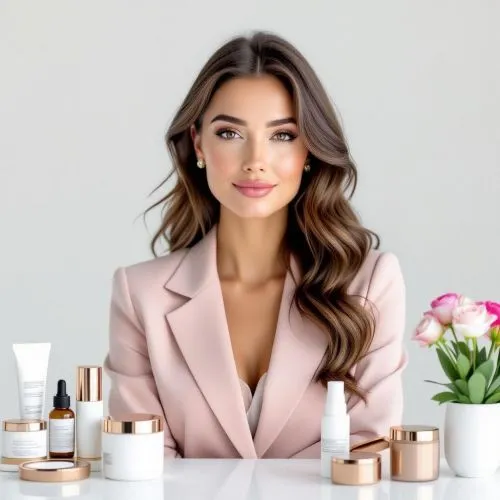-
 DIY: Video master classes
DIY: Video master classes
-
 Aromatherapy
Aromatherapy
-
 Felting master classes
Felting master classes
-
 Eating at home
Eating at home
-
 DIY cosmetics for children
DIY cosmetics for children
-
 Cooking recipes
Cooking recipes
-
 Detergents, cleaning products with your own hands
Detergents, cleaning products with your own hands
-
 Soap making as a business
Soap making as a business
-
 Natural cosmetics. Raw materials for cosmetics and soap.
Natural cosmetics. Raw materials for cosmetics and soap.
-
 Natural oils in cosmetics
Natural oils in cosmetics
-
 News
News
-
 Recipes for balms and conditioners
Recipes for balms and conditioners
-
 Bath Bomb Recipes
Bath Bomb Recipes
-
 Cream recipes. Cream making.
Cream recipes. Cream making.
-
 Lotion recipes. Gel recipes.
Lotion recipes. Gel recipes.
-
 Mask recipes
Mask recipes
-
 Soap recipes. Base soap. Soap from scratch.
Soap recipes. Base soap. Soap from scratch.
-
 Recipes for all occasions
Recipes for all occasions
-
 Natural shampoo recipes
Natural shampoo recipes
-
 Healthy Nutrition Recipes
Healthy Nutrition Recipes
-
 Scrub recipes. Massage tiles. Ubtan
Scrub recipes. Massage tiles. Ubtan
-
 DIY candles
DIY candles
-
 Reference materials, questions, tips
Reference materials, questions, tips
-
 Startup - soap production
Startup - soap production
-
 Hair care. Tips, recipes
Hair care. Tips, recipes
-
 Facial skin care. Cleansers.
Facial skin care. Cleansers.
-
 Body care. Tips, recipes
Body care. Tips, recipes
-
 Photo Reviews
Photo Reviews
-
 Chocolate Handmade
Chocolate Handmade
Certification and registration of cosmetics in the EU and the USA: how to select raw materials to meet the requirements
 Navigating the world of cosmetic formulation is an exciting journey, but when you plan to sell your products, it's crucial to understand and comply with strict regulations. The two most significant markets, the European Union (EU) and the United States (USA), have different but equally stringent requirements for cosmetic safety and labeling. A key part of this process is selecting raw materials that meet these standards. Failing to do so can result in product recalls, fines, and damage to your brand's reputation. This article provides a comprehensive guide to understanding cosmetic regulations in the EU and USA, focusing on how to select raw materials that comply with the rules. We will also provide three recipes that use compliant ingredients, showcasing how to create safe and marketable products.
Navigating the world of cosmetic formulation is an exciting journey, but when you plan to sell your products, it's crucial to understand and comply with strict regulations. The two most significant markets, the European Union (EU) and the United States (USA), have different but equally stringent requirements for cosmetic safety and labeling. A key part of this process is selecting raw materials that meet these standards. Failing to do so can result in product recalls, fines, and damage to your brand's reputation. This article provides a comprehensive guide to understanding cosmetic regulations in the EU and USA, focusing on how to select raw materials that comply with the rules. We will also provide three recipes that use compliant ingredients, showcasing how to create safe and marketable products.
Understanding the Regulatory Landscape: EU vs. USA
The primary goal of cosmetic regulations in both the EU and the USA is to ensure consumer safety. However, they approach this goal with different philosophies.
The European Union (EU)
The EU's regulatory framework is governed by Regulation (EC) No 1223/2009. The EU operates on a pre-market approval system, which means that every cosmetic product must be evaluated for safety before it can be placed on the market.
-
Banned and Restricted Substances: The EU maintains a definitive list of ingredients that are either completely banned or restricted to certain concentrations. This list is extensive and includes over 1,300 substances.
-
Product Information File (PIF): For every product, a PIF must be compiled and kept readily available. This file includes detailed information about the product's safety assessment, manufacturing process, and a complete list of raw materials with their safety data.
-
Responsible Person: Every product sold in the EU must have a Responsible Person (an individual or company) based within the EU who is legally responsible for its compliance.
The United States (USA)
The US market is regulated by the Food and Drug Administration (FDA) under the Federal Food, Drug, and Cosmetic Act (FD&C Act). The FDA operates on a post-market approval system.
-
No Pre-Market Approval: Cosmetic products and ingredients do not need pre-market FDA approval, with the exception of color additives. The manufacturer is responsible for ensuring the safety of their products.
-
Generally Recognized as Safe (GRAS): The FDA provides lists of ingredients that are generally recognized as safe for use. If you use a new ingredient, you are responsible for providing proof of its safety.
-
Labeling and Claims: The FDA has strict rules about what can be written on a product label. Claims that a cosmetic product can treat a disease or affect the structure or function of the body classify it as a drug, which requires a separate and much stricter approval process.
Selecting Raw Materials for Compliance
Your choice of raw materials is the first and most critical step in ensuring regulatory compliance.
-
Check Banned Lists: For the EU market, it is essential to cross-reference every single ingredient against the EU's banned and restricted substance list. Even a trace amount of a banned substance can make your product illegal.
-
Request Documentation: Always request a Certificate of Analysis (COA) and a Safety Data Sheet (SDS) from your suppliers. These documents provide crucial information on the ingredient's purity, composition, and safety profile, which is required for your PIF in the EU.
-
Understand Purity Standards: Ingredients must be of cosmetic-grade purity. For example, a food-grade oil might contain impurities that are not suitable for skin application.
-
Source from Reputable Suppliers: Work with suppliers who are familiar with international cosmetic regulations and can provide the necessary documentation. This ensures you are not unknowingly purchasing a non-compliant ingredient.
-
Consider Preservatives: Preservatives are a key area of regulation. Some are banned, while others are restricted to specific concentrations. Ensure your preservative system is compliant with the regulations of your target market.
Three Recipes Using Compliant Ingredients for EU and USA Markets
These three recipes are formulated with ingredients that are generally accepted in both the EU and the USA, providing a solid foundation for your product line.
Recipe 1: Gentle Daily Face Moisturizer
This recipe uses a simple, well-documented set of ingredients that are accepted in both markets.
-
Prepare the water phase. In a sterilized beaker, weigh 65g of distilled water and 5g of vegetable glycerin. Heat this to 75°C.
-
Prepare the oil phase. In a separate beaker, combine 10g of jojoba oil, 10g of shea butter, and 5g of an emulsifying wax (Polawax). Heat to 75°C, stirring until melted.
-
Emulsify. Pour the water phase into the oil phase while mixing with a hand blender in short pulses until a smooth, thick emulsion forms.
-
Add a compliant preservative and an active. When the temperature drops below 40°C, add 2g of niacinamide and 1g of a broad-spectrum preservative like Geogard 221 (Benzyl Alcohol, Dehydroacetic Acid, Aqua). Stir well.
Compliance Notes: Niacinamide is widely accepted. Geogard 221 is a globally approved preservative system.
Recipe 2: Hydrating Hyaluronic Acid Serum
This serum uses a simple, water-based formula that is easy to keep compliant.
-
Prepare the gel base. In a sterilized beaker, weigh 95g of distilled water. Slowly sprinkle 1g of Hyaluronic Acid powder over the surface. Do not stir immediately; let the powder hydrate for about an hour until a clear gel forms.
-
Add a soothing active. Add 2g of Aloe Vera extract and 1g of Panthenol (Vitamin B5), both of which are widely compliant.
-
Add a compliant preservative. Add 1g of a preservative like Euxyl PE 9010 (Phenoxyethanol, Ethylhexylglycerin). Phenoxyethanol is on the EU's restricted list, with a maximum concentration of 1%, so this recipe falls well within the limits.
-
Package. Pour the finished serum into a clean dropper bottle.
Compliance Notes: Both Hyaluronic Acid and Panthenol are considered safe. Euxyl PE 9010 is a globally accepted preservative system.
Recipe 3: Nourishing Oil-Based Lip Balm
This simple, anhydrous formula avoids the complexities of a water phase, making compliance easier.
-
Prepare the base. In a heat-safe beaker, weigh 10g of Beeswax and 15g of Shea Butter. Gently melt them in a double boiler.
-
Add the oils. Once melted, add 15g of Sweet Almond Oil and 10g of Jojoba Oil. Stir until the mixture is uniform.
-
Add a vitamin. When the mixture is still liquid but has cooled slightly, add 1g of Vitamin E (Tocopherol), a widely accepted antioxidant.
-
Package. Pour the liquid balm into clean lip balm tubes or pots and let it solidify.
Compliance Notes: All ingredients in this recipe are on the GRAS (Generally Recognized as Safe) list in the USA and are widely accepted in the EU. Since there is no water, a preservative is not required.
Advantages Over Industrial Manufacturing

By taking a hands-on approach and carefully selecting your raw materials, you can create products that are superior to many industrial analogues.
-
Complete Transparency: You know every single ingredient that goes into your product. You can guarantee the purity and source of each raw material, which is something mass-market brands often cannot do.
-
Higher Purity and Potency: You can select cosmetic-grade, high-purity ingredients directly from reputable suppliers, ensuring your actives are working at their optimal potency. Many industrial products use lower-grade ingredients to cut costs.
-
Avoidance of Prohibited Substances: By meticulously checking your raw materials, you can guarantee that your products are free of any banned or restricted substances, ensuring full compliance and peace of mind.
-
Tailored Formulations: You have the freedom to create unique, specialized formulas that meet the needs of a specific customer base, without the need for the fillers and low-cost ingredients often found in mass-market products.
Creating safe and compliant cosmetic products is a journey of meticulous attention to detail. By understanding the regulations of your target market and diligently selecting your raw materials, you lay the foundation for a successful and ethical brand that can grow on a global scale.
Mylo Opt Cosmetics Blog – Your Reliable Guide to Beauty and Care
Welcome to the Mylo Opt cosmetics blog! Here, you will find valuable advice, interesting recipes, and professional recommendations for creating soap, cosmetics, and candles with your own hands. Our blog is designed for anyone passionate about natural cosmetics, looking for new ideas, and wanting to learn more about producing high-quality skincare and haircare products. We share tested recipes, useful tips, and the latest news from the world of cosmetics.
Why Choose the Mylo Opt Cosmetics Blog?
Mylo Opt is not just an online store; it is a community of people passionate about creating natural cosmetics. Here are a few reasons why our blog will be useful to you:
- Experience and Expertise: Our authors are experienced cosmetologists, soap makers, and aromatherapy specialists. We share reliable and tested recipes that have undergone thorough testing and received positive feedback.
- Credibility and Authority: We ensure that all information in our blog is up-to-date and reliable. We reference scientific research and verified sources so that you can trust the quality of the information provided.
- Reader-Focused: Our content is tailored to you – our readers. We strive to answer your questions, solve your problems, and inspire new achievements in the world of natural cosmetics.
Popular Products from the Mylo Opt Online Store
Before we move on to recipes and tips, let us introduce you to the most popular products from our online store, which will help you create high-quality and natural cosmetics:
- Soap Bases: High-quality soap bases allow you to create beautiful and beneficial handmade soaps. We offer glycerin bases, bases with added oils and extracts, as well as transparent and white bases.
- Fragrance Oils and Fragrances: Give your products a unique scent with our fragrance oils and fragrances. We offer a wide range of scents – from fresh and floral to spicy and woody.
- Essential Oils: Essential oils are natural components that not only add fragrance to products but also offer beneficial properties for the skin and hair. Our range includes lavender, mint, eucalyptus, lemon, and many other oils.
- Active Ingredients: Vitamins, antioxidants, hyaluronic acid, and other active ingredients help improve the properties of your cosmetics. We offer only tested and high-quality components.
- Pigments and Dyes: Give your products bright and lasting colors with our pigments and dyes. They are safe for the skin and suitable for use in soap, cosmetics, and candles.
- Emulsifiers and Thickeners: To create creams and lotions, you will need emulsifiers and thickeners. We offer quality ingredients that help you achieve the desired consistency and stability of the product.
- Soap and Candle Molds: Create unique items with our soap and candle molds. Our range includes molds of various sizes and designs.
- Everything for Candles: Wax, wicks, fragrances, and dyes for candles – we have everything you need to create beautiful and fragrant candles.
Recipes and Tips for Making Handmade Soap
Cold Process Soap for Beginners
Making cold process soap is an exciting process that allows you to control all the ingredients and create unique recipes. Here is one simple cold process soap recipe for beginners:
Ingredients:
- 500 g olive oil
- 300 g coconut oil
- 200 g palm oil
- 150 g castor oil
- 120 g lye (sodium hydroxide)
- 300 ml distilled water
- Essential oils (lavender, mint, eucalyptus)
- Pigments or natural dyes (optional)
Process:
- Prepare all ingredients and tools. Always use protective gloves and goggles, as lye can be dangerous.
- Weigh the lye and water. Slowly add the lye to the water, stirring until it fully dissolves. Allow the mixture to cool to 40-45°C.
- Weigh the oils and melt them in a water bath. When the oils and lye solution reach the same temperature (about 40-45°C), slowly pour the lye into the oils, stirring constantly.
- Use an immersion blender to mix until trace (when the mixture thickens and leaves a trail when stirred).
- Add essential oils and pigments if desired. Mix thoroughly.
- Pour the mixture into a prepared mold and cover with a towel. Let the soap harden for 24-48 hours.
- Remove the soap from the mold and cut it into bars. Allow the soap to cure for 4-6 weeks before use.
Homemade Cosmetics Recipes
DIY Moisturizing Cream
Creating a moisturizing cream at home allows you to control the ingredients and adapt the recipe to your needs. Here is a simple recipe for a moisturizing cream:
Ingredients:
- 50 ml rose water
- 50 ml distilled water
- 10 g emulsifier (e.g., Olivem 1000)
- 10 ml jojoba oil
- 5 ml avocado oil
- 5 drops lavender essential oil
- 2 drops tea tree essential oil
Process:
- Weigh all the ingredients.
- In a water bath, melt the emulsifier with the oils until smooth.
- Separately, heat the water phase (rose water and distilled water) to the same temperature as the oil phase.
- Slowly pour the water phase into the oil phase, stirring constantly.
- Use an immersion blender to emulsify until you achieve a creamy consistency.
- Add essential oils and mix thoroughly.
- Pour the cream into a sterilized jar and allow it to cool.
DIY Candle Recipes
Aromatic Soy Candle
Creating aromatic candles is a creative process that allows you to experiment with scents and designs. Here is a simple recipe for a soy candle:
Ingredients:
- 200 g soy wax
- 20 ml fragrance oil (e.g., vanilla or lavender)
- Wick for candles
- Dyes (optional)
- Glass or metal candle mold
Process:
- Melt the soy wax in a water bath until liquid.
- Add the fragrance oil and dyes if desired. Mix thoroughly.
- Secure the wick in the center of the candle mold.
- Slowly pour the melted wax into the mold, holding the wick.
- Allow the candle to fully harden (about 24 hours).
- Trim the wick to the desired length and enjoy your aromatic candle.
Tips for Beginners in Cream Making
- Learn the Basics: Before starting to create creams, it is important to learn the basic principles and ingredients used in cream making.
- Experiment with Formulas: Do not be afraid to experiment with different ingredients and proportions to find the perfect formula for your skin.
- Use Quality Ingredients: The effectiveness and safety of your product depend on the quality of the ingredients. Always choose tested and natural components.
- Maintain Hygiene: It is important to maintain cleanliness and sterility when creating cosmetics to avoid contamination and spoilage of the product.
- Start with Simple Recipes: For beginners, it is best to start with simple recipes to master the basic techniques and principles of cream making.
Conclusion
Our Mylo Opt cosmetics blog is your reliable source of information and inspiration in the world of natural cosmetics. We share useful tips, tested recipes, and the latest news to help you create quality and effective products for skin, hair, and home care. Subscribe to our blog, follow the updates, and discover new opportunities in the world of natural cosmetics with Mylo Opt!





